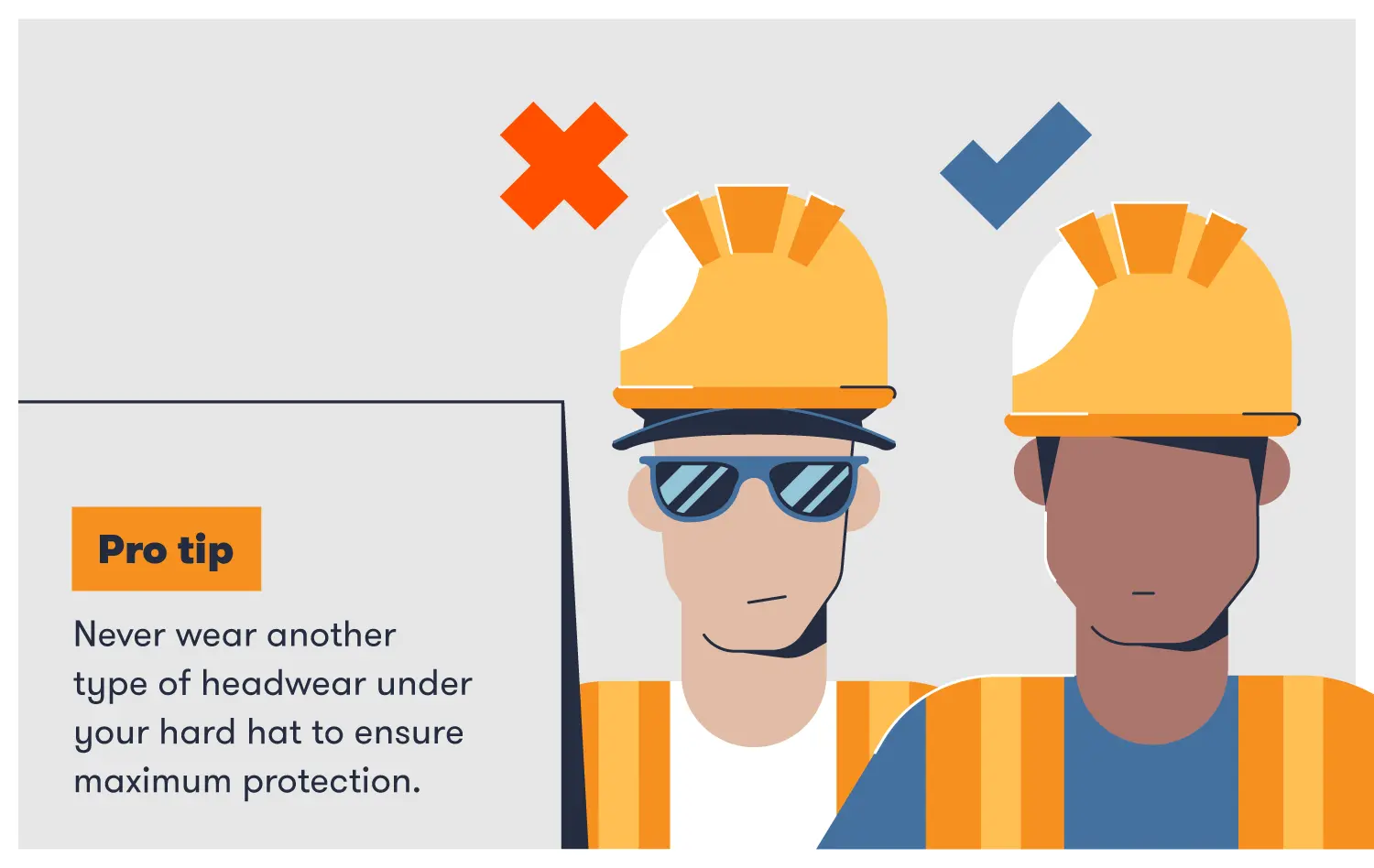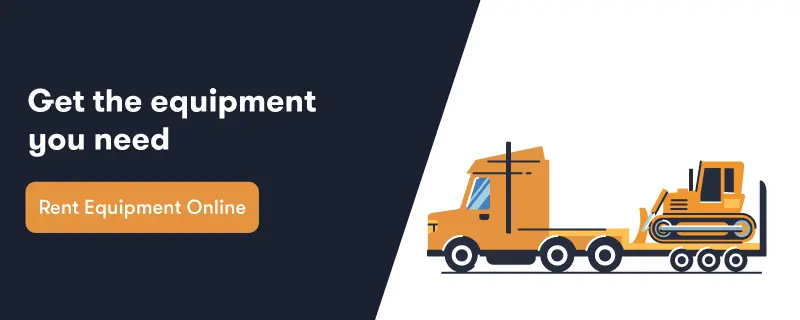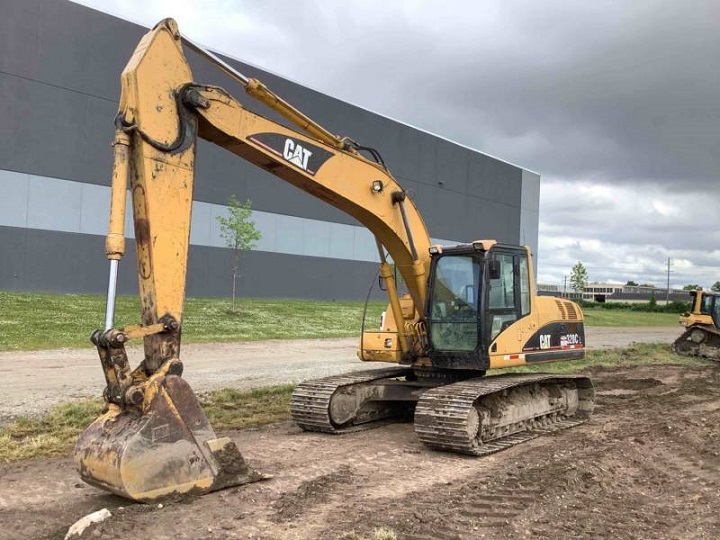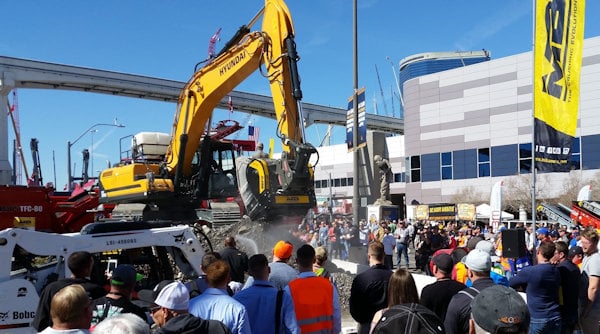How To Wear a Hard Hat for Maximum Protection
Construction site safety is of utmost importance when working on a project. Heavy machinery, hazardous materials and falling debris are factors that contribute to construction sites being hazardous work environments. Due to these risks, construction workers must adhere to special protocols and use protective gear to protect themselves.
Wearing a hard hat while on a construction site is a protocol that protects your head and neck from injuries in the event of falling materials, but only if worn correctly.
Hard hats may seem easy enough to place on your head, but in reality, the difference between putting on a hard hat and wearing it properly can be the difference between a significant head injury and a minor bump. It’s crucial to know how to wear a hard hat correctly, and that’s what we’re here to discuss.
Continue reading to find our ultimate guide on how to wear a hard hat to ensure the highest level of protection.
A Closer Look at the Hard Hat
Hard hats have various components that impact safety and fit. Before explaining how to wear a hard hat, it’s important to understand these parts and where each piece fits.
Here’s everything you should know about the parts of a hard hat.
- Shell: The outermost layer of the hard hat that absorbs the impact of falling objects.
- Suspension System: The interior portion of the hard hat that fits around the wearer’s head, providing a comfortable and secure fit.
- Cradle: A part of the suspension system that fits the front of the head to keep the hat secure.
- Headband: The headband connects to the suspension system and fits around the head.
- Sweatband: A band of absorbent material that lines the front-most interior of the headband to absorb sweat.
- Brim: A part of the hard hat that extends out from the front of the shell to provide shade and protection from other elements.
- Nape strap: This strap fits against the part of the head that meets the neck and often features a ratchet.
- Rachet: The knob on the back of the nape strap that loosens and tightens the fit of the hard hat.
With this new knowledge of a hard hat’s anatomy, here are some essential dos and don’ts when wearing a hard hat.
Do: Fit the Hard Hat to Your Head
The most important part of wearing a hard hat is ensuring its proper fit. When first purchasing a hard hat, measure the circumference of your head just above the eyebrows and ears to determine your most accurate size. After finding your measurements, compare them to the manufacturer’s sizing guide for the best fit.
The ratchet located on the back of the nape strap allows for an adjustable fit that you can tighten or loosen each time you wear the hat. If the hat doesn’t fit properly, try turning the ratchet to the right to tighten it or to the left to loosen it.
Do: Inspect Your Hard Hat Regularly
If a hard hat sustains damage it may be less protective and fail you if another accident occurs. Wear and tear from daily construction work can also require you to replace the hard hat. For this reason, you should conduct a quick inspection each day.
Here are the damages and points to look out for.
- Check the shell. Inspect the hard hat shell for any signs of cracks, dents or other damage. If the shell has damage, replace the hard hat immediately.
- Inspect the suspension system. Look at the suspension system inside the hard hat shell. Ensure all the straps and the headband are intact and not frayed or worn. Check to see if any parts of the suspension system are missing or damaged.
- Check the manufacturer dates. Many hard hats have stickers indicating the manufacturing date or the date of its last professional inspection. Verify that the stickers are still current. Most manufacturers recommend replacing the hard hat after five years.
Do: Safely Store Your Hard Hat
Taking care of your hard hat will extend its lifespan and, more importantly, keep you safe. A significant part of caring for your hard hat is storing it safely so it doesn’t wear out from being left in the elements.
Here are a few tips for safely storing your hard hat.
- Keep the hard hat in a cool, dry place. Exposure to heat, humidity and sunlight can cause the hard hat to deteriorate. Store the hard hat in a cool, dry place away from direct sunlight when not in use.
- Avoid storing the hard hat in a vehicle. Storing the hard hat in a vehicle can expose it to extreme temperatures, causing the shell and the suspension system to become brittle. If you must store the hard hat in a vehicle, keep it in a storage compartment or under a seat.
- Do not hang the hard hat from its suspension straps. Avoid hanging the hat from its straps as it could cause the suspension to deform and alter the fit. Instead, consider storing the hard hat on a flat surface.
- Keep the hard hat away from chemicals. Exposure to chemicals can cause the hard hat to weaken. Store the hard hat away from chemicals like gasoline and strong cleaning agents.
Don’t: Wear Anything Under Your Hard Hat
Wearing something under a hard hat — such as a baseball cap, beanie or hood — can interfere with the fit and function of the hard hat. These items may reduce its effectiveness in protecting you.
Adding a hat underneath a hard hat can interfere with the suspension system, which plays an essential role in how your gear fits. Additionally, the extra headwear reduces the amount of clearance space between the shell and your head. Without proper clearance space, the hard hat cannot effectively protect you from falling debris.
In some cases, it’s acceptable to wear a very thin liner under a hard hat, but you should always check and adhere to the hard hat manufacturer’s specifications and safety tips.
Don’t: Wear Your Hard Hat on the Back of Your Head
While you may wear other hats on the crown of your head with the brim slightly upturned,, you should always place your hard hat in a neutral position on the top of your head. The headband of the hat should rest on the forehead just above the eyebrows to ensure proper fit. The nape strap should fit where the back of your head meets the neck.
Wearing the hard hat on the back of your head leaves your forehead exposed and compromises its fit, leaving your hard hat less effective.
Don’t: Block Your Eyesight With the Brim
While the brim is an essential component of a hard hat, it should never obstruct your view. The brim shades your face and protects you from elements like sunlight and rain. But if the hat sits too low on your forehead, you may not see potential hazards, falling debris, obstacles or people in your work environment.
Moreover, wearing the hat too low on your forehead leaves the back of your head and neck exposed in a dangerous environment.
4 Tips for Finding the Right Fit
When it comes to construction safety wearables like hard hats, a perfect fit is essential. From breathing room to sliding mechanisms, there are a few things to consider when you’re picking out your hard hat. Here are four tips for finding the ideal hard hat:
- Leave breathing room. There should always be some breathing room between the suspension and the shell of the hard hat. This breathing room is helpful for ventilation and keeping you comfortable, but the clearance absorbs the energy of falling debris if it hits the hard hat.
- Secure and tight are not the same. It’s easy to believe that the tighter the hat, the more secure it will be — but this isn’t always true. If the hat is too tight, it can cause discomfort, pain and pulling on the hair. Instead, the hard hat should feel secure enough that it won’t fall off the head.
- Select a hat with sliding mechanisms. A hard hat with sliding mechanisms allows the user to adjust the fit of the hard hat and can fit a wider range of head sizes and shapes.
- Always wear the brim facing forward. The brim acts as a shield, deflecting objects away from the head and face of the wearer. If the brim were to face backward, it would be less effective and compromise the fit of the suspension system.
FAQ About Wearing a Hard Hat
Construction safety is a serious matter and hard hats play a vital role in ensuring the protection of workers. If you have lingering questions, you’re not alone — these are the most frequently asked questions about how to wear a hard hat.
Which Side of the Hard Hat is the Front?
If your hard hat has a brim that protrudes from one side like a baseball cap, you should assume it’s the front of the hat and wear it just above the eyebrows.
Some hard hats may have a brim along all of the edges, which may cause some confusion. In this case, look for the sweatband on the inside of the headband. The sweatband is a line of sweat-wicking material located on the front of the hat. The sweatband should always rest on your forehead, making it easy to identify the correct orientation of the hat.
Can I Wear a Hat Under My Hard Hat?

The short answer is no. Manufacturers design suspension systems for hard hats to fit directly on the head without any additional headwear. Wearing a hat or hood underneath the hard hat can interfere with the suspension system and compromise the fit, reducing the effectiveness of the hard hat in protecting your head.
It’s important to wear the hard hat directly on the head without anything that could potentially compromise its fit or function. This will ensure the highest level of protection.
When Should I Replace My Hard Hat?
In general, manufacturers warn that you should replace your hard hat every five years regardless of its condition, as the materials can wear over time and reduce its effectiveness.
However, if you notice any cracks, dents or other signs of damage, replace your hard hat immediately. Similarly, if you have been involved in an accident or dropped your hard hat from a significant height, you should replace it — even if there are no visible signs of damage.
Remember to err on the side of caution regarding your safety equipment to ensure you’re working in accordance with the worksite safety plan.
How Do I Take Care of My Hard Hat?
Your hard hat does a lot to protect you, so it’s important to take great care of it to ensure its longevity. Here are five tips for taking care of your hard hat:
- Clean it regularly. Harsh chemicals and solvents can damage the plastic, so opt to wipe down the shell with a damp cloth to remove dust and grime.
- Avoid extreme temperatures. Don’t leave your hard hat in extreme heat or cold, as this can cause the plastic to become brittle. Store your hard hat in a cool, dry place when it’s not in use.
- Check for damage. Inspect your hard hat regularly for cracks, dents or other signs of damage. If you notice any damage, replace the hard hat immediately.
- Replace worn or damaged parts. If the suspension system becomes worn or damaged, you can often replace it with a new one from the same hard hat manufacturer.
- Don’t alter the hard hat. Never drill holes, paint or make modifications to your hard hat, as this can weaken the structure and compromise its effectiveness.
When you put safety first, you can save time and money on your projects. Now that you understand the fundamentals of how to wear a hard hat, do your part to keep yourself and those around you safe while on the job site. When it comes time to bring in the heavy machinery for your project, BigRentz delivers the equipment you need to safely and efficiently get the job done. With on-site delivery, online reservations and service areas across all 50 states, BigRentz continues to be the most convenient option for renting construction equipment. Browse and reserve BigRentz equipment rentals in your area today.





